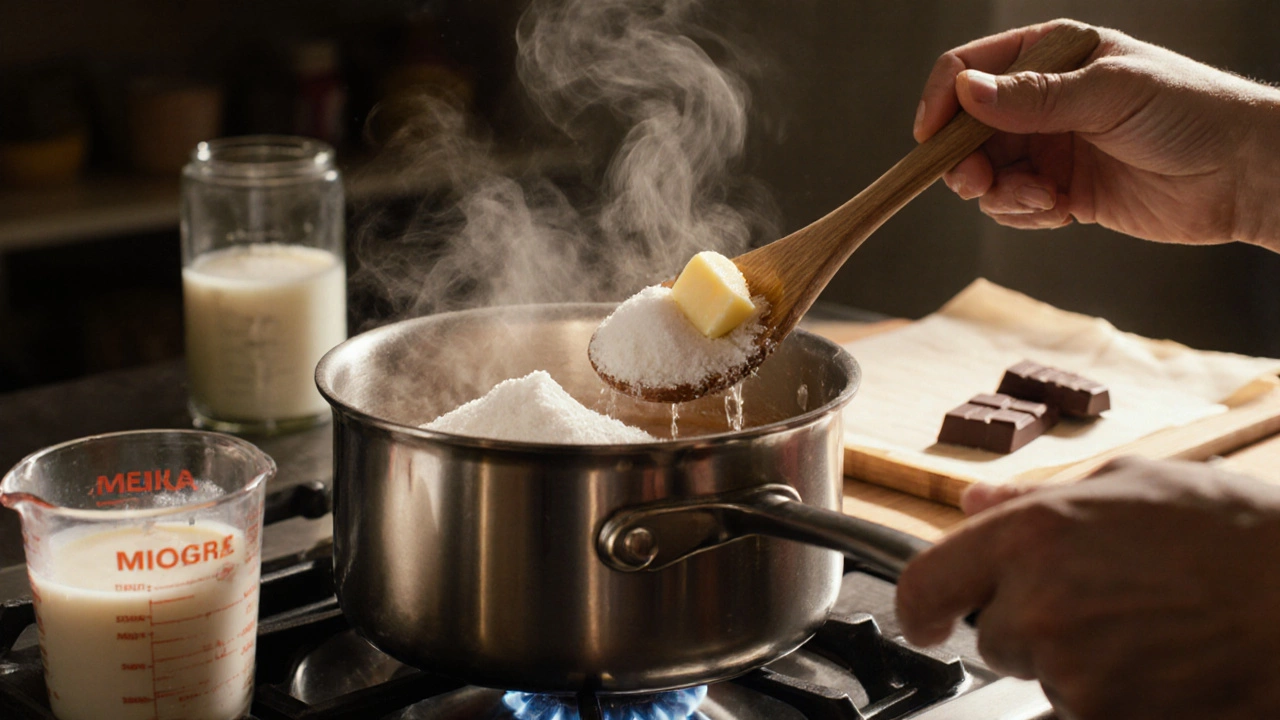
Do You Need to Refrigerate Homemade Fudge?
Find out if homemade fudge needs refrigeration, how to store it, shelf life tips, spoilage signs, and serving advice for safe, delicious results.
When working with food safety fudge, the practice of keeping fudge safe to eat by controlling temperature, hygiene, and storage conditions. Also known as fudge safety, it helps bakers avoid spoilage and health risks.
At the heart of any safe batch is fudge, a dense, buttery confection made from sugar, butter, and milk or cream. Fudge is forgiving during cooking but becomes a breeding ground for microbes if left at the wrong temperature. Understanding how food safety fudge practices intersect with the chemistry of fudge lets you enjoy silky bites without a stomach upset.
One of the biggest threats is improper temperature control, maintaining the right heat range during cooking and cooling. The classic fudge recipe calls for heating the mixture to the soft‑ball stage (around 235 °F or 112 °C). Overshooting this point can cause grainy texture, while cooling too slowly invites bacterial growth. Using a reliable candy thermometer and moving the pot off the heat as soon as the target is hit are simple steps that protect both texture and safety.
After the fudge reaches the right stage, rapid cooling is key. Pour the hot mixture onto a pre‑greased pan, stir until it thickens, then let it sit at room temperature for no more than two hours. Beyond that window, the risk of contamination rises sharply, especially in warm kitchens. Once the fudge firms up, wrap it tightly in plastic wrap or store it in an airtight container to lock out moisture and airborne spores.
Proper fudge storage, the method of keeping finished fudge in a safe environment extends shelf life and keeps flavors fresh. The refrigerator is your best friend for most homemade fudge; it slows bacterial growth and prevents the butter from turning rancid. Store slices in a shallow container to keep them flat and avoid crushing.
If you need to keep fudge for more than a week, the freezer works well. Portion the fudge into bite‑size pieces, wrap each portion in parchment, then seal in a freezer bag. Thaw in the fridge overnight before serving to preserve texture. Remember, repeated freeze‑thaw cycles can cause sugar crystals to form, so limit the number of times you move fudge in and out of the freezer.
Cross‑contamination is another hidden danger. Always use clean utensils when cutting or serving fudge. If you’re handling other foods—especially raw meats or eggs—wash your hands and change gloves before touching the confection. Even a tiny amount of raw protein residue can introduce harmful bacteria that multiply quickly in the sweet, moist environment of fudge.
When a batch goes wrong—say it’s too soft, grainy, or oddly flavored—don’t throw it away. The same article on failed fudge, common problems and rescue ideas for fudge shows you can transform it into truffles, frostings, or ice‑cream toppings. Fixing the issue not only saves ingredients but also prevents waste that could otherwise become a health hazard if left out.
Lastly, keep an eye on expiration dates for your ingredients. Fresh butter, high‑quality chocolate, and unexpired sugar all contribute to safe fudge. Using butter that’s past its prime or milk that’s close to spoiling can introduce off‑flavors and unwanted microbes, turning a delicious treat into a risky one.
By mastering temperature control, smart storage, and clean‑handed practices, you’ll turn every batch of fudge into a safe, tasty delight. Below you’ll find a curated collection of articles that dive deeper into each of these aspects—whether you’re looking for storage hacks, rescue recipes, or the science behind why fudge can go bad. Explore the guides and keep your fudge both delicious and safe.

Find out if homemade fudge needs refrigeration, how to store it, shelf life tips, spoilage signs, and serving advice for safe, delicious results.